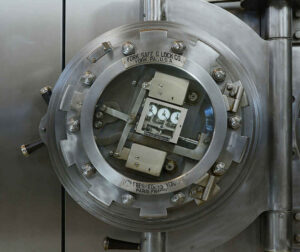While Trump’s been busy ordering mothballed coal fed power plants back online, Pittsburgh’s finding a better — and greener — use for one of its retired coal-fired generating stations.

There are still people around who can remember when the city of Pittsburgh thrived on the availability of cheap and plentiful coal, which was used to power the numerous steel mills that made Pittsburgh “steel city” back in the day. These days, the steel mills are long gone — although there are a few still active in the city’s suburbs — and the city’s downtown is no longer covered in soot.
Earlier this month it was announced that the Homer City Generating Station, which was once the largest coal-burning power plant in Pennsylvania, is being repurposed as a natural gas-powered data center campus that will occupy more than 3,200-acres, and will be designed specifically to meet the demands created by running AI and high performance computing workloads.
Besides space, those demands center on power… and lots of it. For that, GE Vernova has been contracted to provide seven high efficiency hydrogen-enabled gas-fired turbines, with the first deliveries expected to begin in 2026. Once online, the generators will deliver up to 4.5 gigawatts to support AI-driven hyperscale data centers, while reducing greenhouse gas emissions by 60–65% per megawatt hour compared to the former coal plant.
“Alongside our best-in-class partners, we have been working tirelessly to ensure that Homer City’s transformation can happen as quickly and seamlessly as possible,” William Wexler, the president and CEO of Homer City Redevelopment, the organization spearheading the project, said in a statement. “Further, we are fully committed to maximizing the unprecedented level of economic opportunity this project represents not just for Indiana County, but for all of Pennsylvania and the Mid-Atlantic region of the country.”
Much of the critical infrastructure for the project is already in place, left over from the legacy Homer City plant, including transmission lines connected to the PJM and NYISO power grids, substations, and water access. Construction of the site is expected to commence this year and it’s expected to begin producing power by 2027.
Revitalizing Pittsburgh
In many ways Pittsburgh has been a city in decline since the late 1970s, which is when the steel business in the US began to falter as foreign competitors adopted more modern and efficient production methods, while U.S. mills — especially in Pittsburgh — continued to rely on aging technology. This was quickly made worse during the early Reagan years, fueled in part by the 1981-1982 recession. The number of Pittsburgh area steel workers dropped from 90,000 in 1980 to 44,000 by 1984, and by the end of the 1980s, more than 75% of the regions steel production had ceased.
The city has never fully recovered from this, and efforts to replace lost steel mill employment with tech sector jobs has only been partially successful. Because of this, the city is confronted with demographic shifts, such as an aging population as young adults leave the region in search of opportunity elsewhere, and gentrification that’s leading to long-term residents being displaced by childless remote workers, which is resulting in proposed large scale public school closings.
There have been several projects recently that, similar to Homer City’s redevelopment, have been instrumental in renewing Pittsburgh’s neighborhoods:
- The historic Bethlehem Steel facility now houses JM Steel, which produces critical components for Nextracker, a California-based company that builds solar trackers for the solar energy market.
- Hazelwood Green, a former steel mill, has become a global hub for advanced manufacturing, robotics, and biomanufacturing.
- The Strip District, also known as “Robotics Row,” an area formally occupied by industrial factories, is now home to robotics and AI companies such as Carnegie Robotics, Bloomfield Robotics, Aurora, Honeywell, and Bosch.
All of this seems to be paying off for the area, and is not only attracting outside investment, it’s creating jobs.
Last fall, Mainspring Energy, a producer of low-emission generators, invested $175 million in a 300,000-square-foot manufacturing facility in Pittsburgh, bringing more than 600 skilled jobs to the region. Last month Mitsubishi Electric subsidiary Mitsubishi Electric Power Products broke ground on a new $86 million switchgear factory in the city.
“As the regional economic development organization, we’ve been diligently focused on the transition of shuttered industrial assets into their highest and best use,” Stefani Pashman, CEO of Allegheny Conference on Community Development said of the Homor City project. “The economic opportunities stemming from this win, including job creation, energy generation, and community revitalization, exemplify the very best of our regional strengths.”
Christine Hall has been a journalist since 1971. In 2001, she began writing a weekly consumer computer column and started covering Linux and FOSS in 2002 after making the switch to GNU/Linux. Follow her on Twitter: @BrideOfLinux





